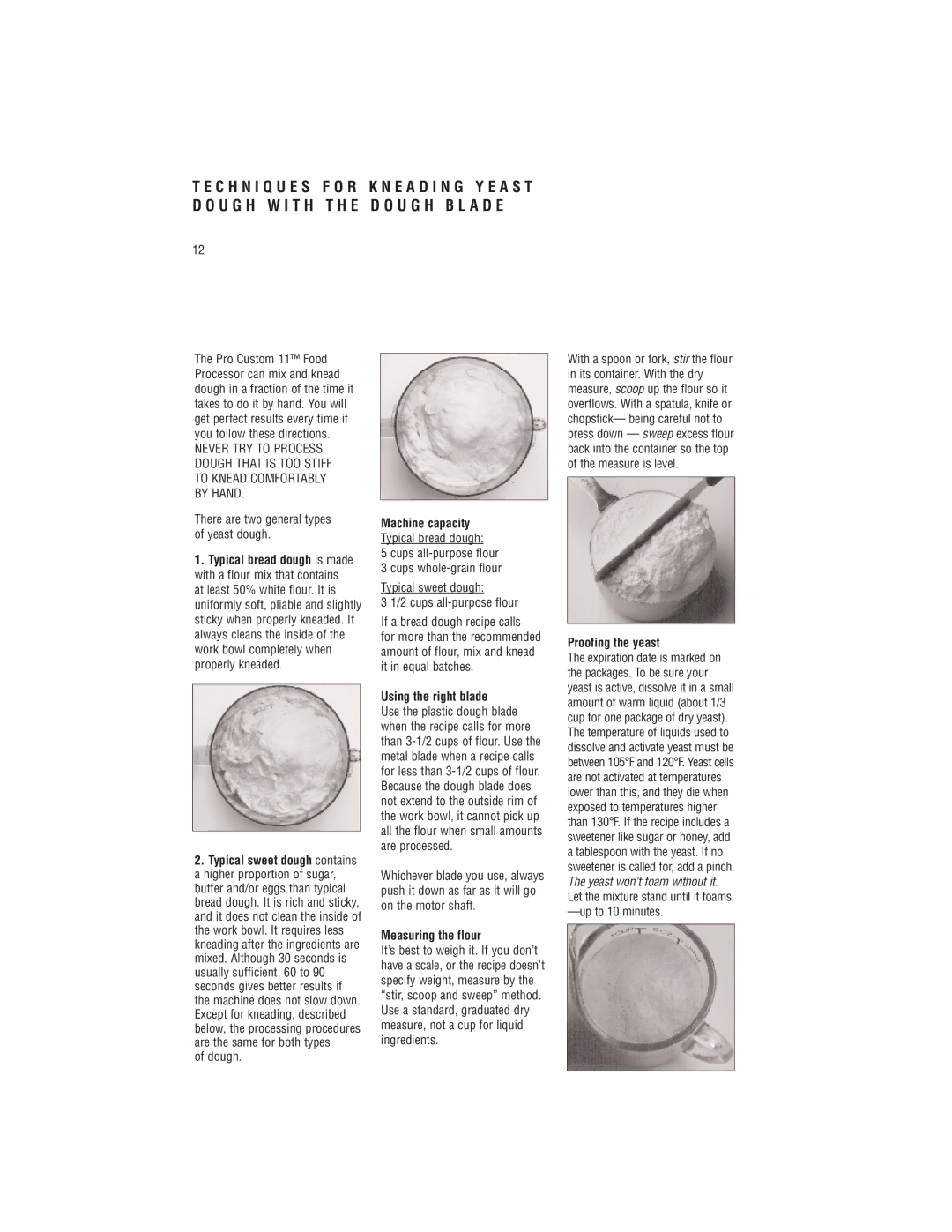
T E C H N I Q U E S F O R K N E A D I N G Y E A S T D O U G H W I T H T H E D O U G H B L A D E
12
The Pro Custom 11™ Food Processor can mix and knead dough in a fraction of the time it takes to do it by hand. You will get perfect results every time if you follow these directions.
NEVER TRY TO PROCESS DOUGH THAT IS TOO STIFF TO KNEAD COMFORTABLY BY HAND.
There are two general types of yeast dough.
1.Typical bread dough is made with a flour mix that contains at least 50% white flour. It is uniformly soft, pliable and slightly sticky when properly kneaded. It always cleans the inside of the work bowl completely when properly kneaded.
2.Typical sweet dough contains a higher proportion of sugar, butter and/or eggs than typical bread dough. It is rich and sticky, and it does not clean the inside of the work bowl. It requires less kneading after the ingredients are mixed. Although 30 seconds is usually sufficient, 60 to 90 seconds gives better results if the machine does not slow down. Except for kneading, described below, the processing procedures are the same for both types
of dough.
Machine capacity
Typical bread dough:
5 cups
3 cups
Typical sweet dough:
3 1/2 cups
If a bread dough recipe calls
for more than the recommended amount of flour, mix and knead it in equal batches.
Using the right blade
Use the plastic dough blade when the recipe calls for more than
Whichever blade you use, always push it down as far as it will go on the motor shaft.
Measuring the flour
It’s best to weigh it. If you don’t have a scale, or the recipe doesn’t specify weight, measure by the “stir, scoop and sweep” method. Use a standard, graduated dry measure, not a cup for liquid ingredients.
With a spoon or fork, stir the flour in its container. With the dry measure, scoop up the flour so it overflows. With a spatula, knife or chopstick— being careful not to press down — sweep excess flour back into the container so the top of the measure is level.
Proofing the yeast
The expiration date is marked on the packages. To be sure your yeast is active, dissolve it in a small amount of warm liquid (about 1/3 cup for one package of dry yeast). The temperature of liquids used to dissolve and activate yeast must be between 105°F and 120°F. Yeast cells are not activated at temperatures lower than this, and they die when exposed to temperatures higher than 130°F. If the recipe includes a sweetener like sugar or honey, add a tablespoon with the yeast. If no sweetener is called for, add a pinch. The yeast won’t foam without it. Let the mixture stand until it foams
